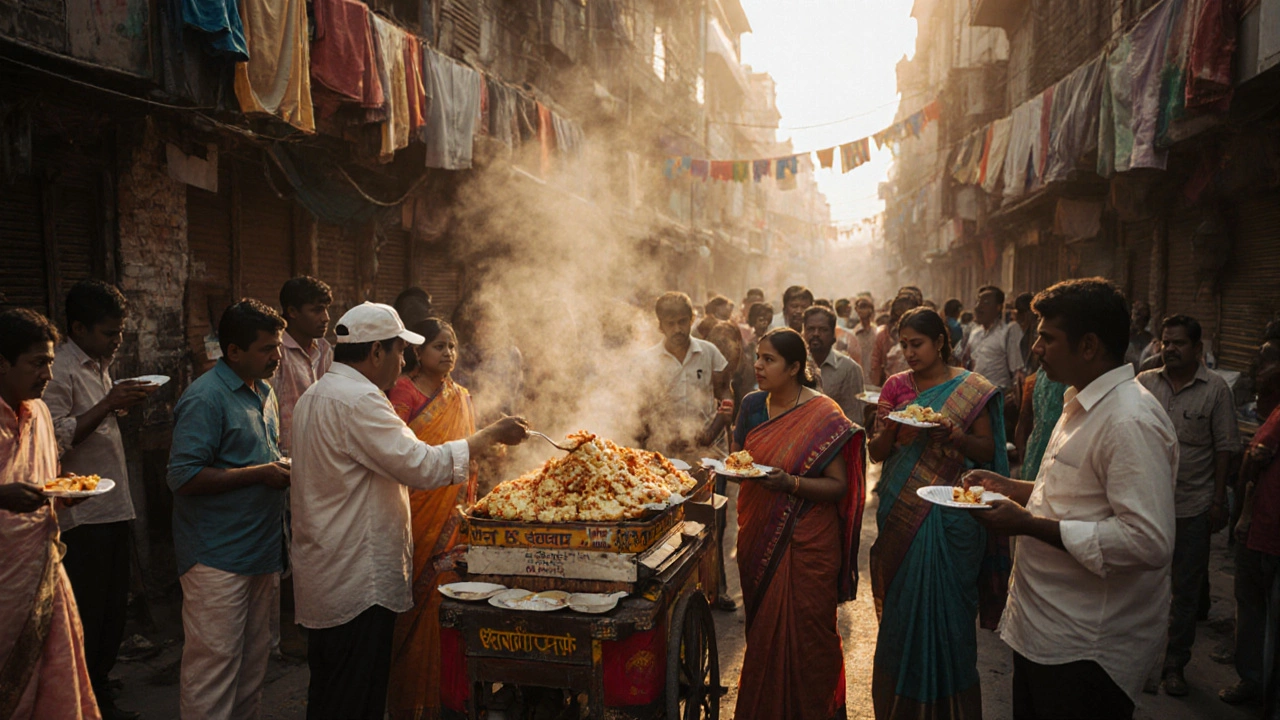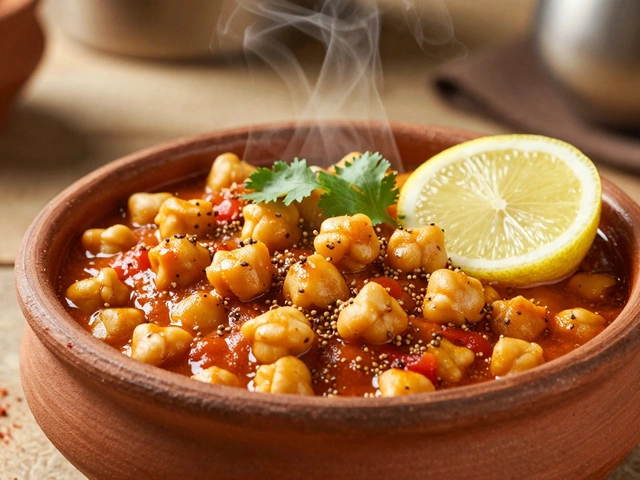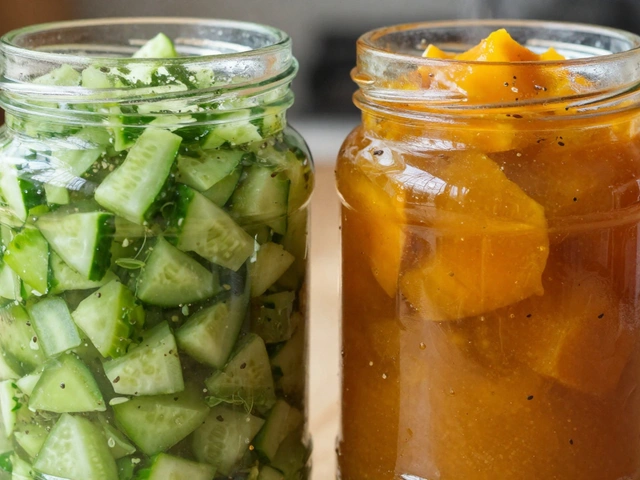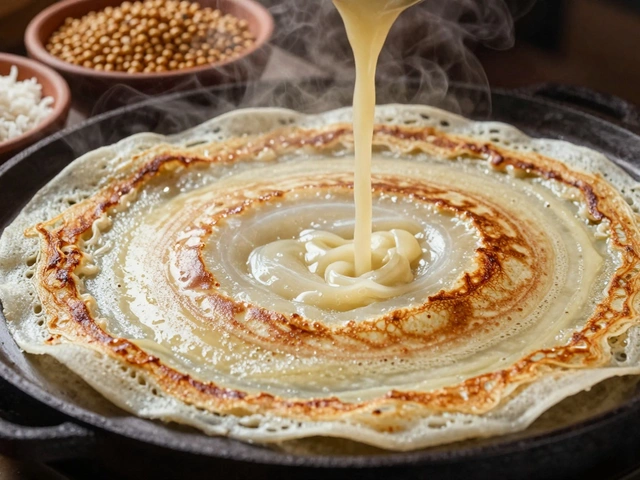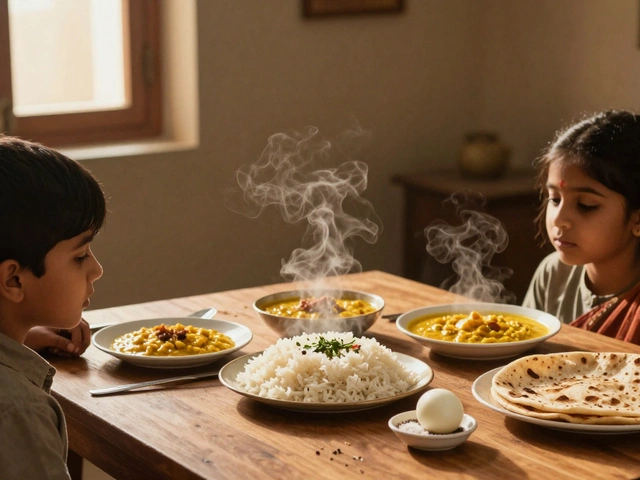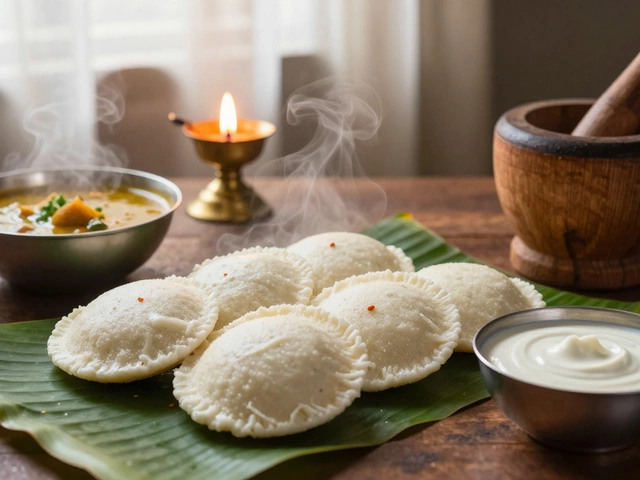Maharashtra Street Food Budget Calculator
Your Meal Choices
Budget Guide
The iconic Mumbai street food - fried potato balls with chutney
Spicy sprouted lentil curry with farsan and bread
Flattened rice with peanuts, curry leaves and lemon
Crispy puri with potatoes, onions and chutneys
Your Estimated Daily Cost
Total for all selected meals
Ask anyone who’s eaten their way across India, and they’ll tell you: food isn’t just fuel here-it’s identity, history, and daily ritual. But if you had to pick one state that truly lives and breathes food, the answer isn’t just about spice levels or fancy restaurants. It’s about what’s on the plate at 7 a.m., what’s sizzling on the roadside at 9 p.m., and what families argue over at Sunday lunch. The most foodie state in India? Maharashtra.
Why Maharashtra wins the foodie crown
Maharashtra doesn’t just have good food-it has food that changes with the hour, the neighborhood, and the season. In Mumbai, you’ll find vada pav, the humble burger of the masses, sold by vendors who’ve been making it the same way for 50 years. In Pune, you’ll get misal pav, a spicy sprouted lentil curry piled high with farsan and served with buttered bread. In the Konkan coast, kokum curry and fish rice are eaten with bare hands, just as generations have done.
What sets Maharashtra apart is how deeply food is woven into daily life. Breakfast isn’t a quick bite-it’s a ritual. In Mumbai, people line up for pav bhaji before work. In Nashik, they start the day with poha, flattened rice tossed with peanuts, curry leaves, and a squeeze of lemon. In Aurangabad, it’s bhakri with jaggery and sesame. No two towns eat the same thing, and that’s the point.
Breakfast that defines a region
If you’re looking for the best quick breakfast in India, Maharashtra delivers without apology. The state’s morning meals aren’t afterthoughts-they’re events. In Mumbai, the breakfast cart is a cultural institution. Vendors push carts with steam rising from giant pans of pav bhaji, each serving made fresh to order. You pay 40 rupees, get a paper plate, and eat standing up next to a taxi driver, a student, and a factory worker-all sharing the same flavor.
Compare that to Punjab, where parathas are stuffed with potato, paneer, or even minced meat and fried in ghee. Or Tamil Nadu, where idli and sambar are steamed daily. Maharashtra’s breakfasts are louder, messier, and more layered. Take misal pav: the sprouted moth beans are simmered with spices, crushed red chilies, and tamarind, then topped with crunchy farsan. The bread isn’t just a side-it’s a tool for scooping, soaking, and savoring.
And then there’s the street-side chai. In Maharashtra, chai isn’t served in cups-it’s served in small clay cups called kulhads, or in glass tumblers with a metal saucer. The tea is strong, sweet, and boiled with milk, cardamom, and sometimes ginger. It’s not a drink. It’s a pause.
Other contenders-and why they fall short
People will argue for Tamil Nadu, with its idli-dosa-sambar trifecta. Or Karnataka, where mysore pak and ragi mudde are staples. Or Punjab, where buttery parathas and lassi are non-negotiable. But here’s the thing: those states have iconic dishes. Maharashtra has an entire food ecosystem.
Tamil Nadu’s breakfast is elegant and consistent. Karnataka’s is earthy and traditional. Punjab’s is rich and indulgent. Maharashtra’s? It’s chaotic, inventive, and always changing. One day you eat batata vada from a stall in Bandra. The next, you’re in Kolhapur trying spicy mutton curry with bhakri. The next, you’re in Nagpur eating orange-flavored chikki as a snack.
There’s no single dish that defines Maharashtra. That’s the point. It’s not about one star recipe-it’s about the sheer volume of options, the creativity in combining ingredients, and the way food is treated as art, not just sustenance.
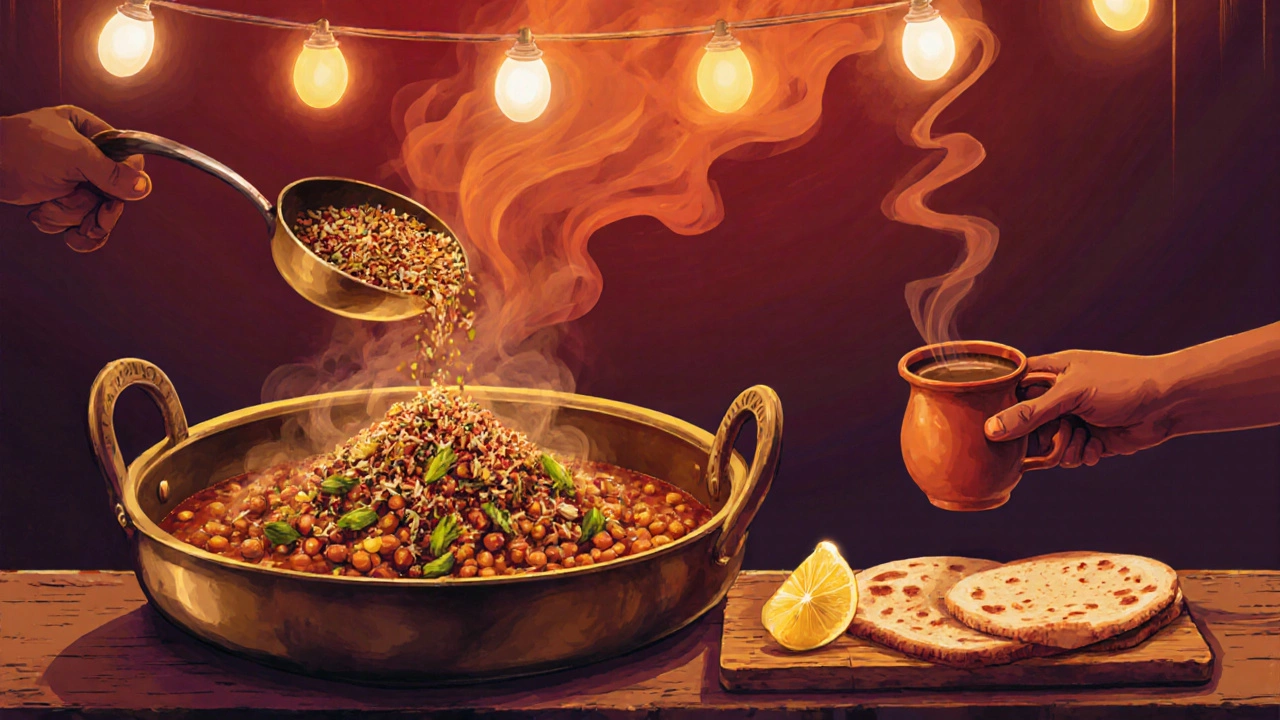
The spice, the street, the soul
Maharashtra’s food doesn’t hide behind fancy plating. It thrives in the open air. The best vada pav isn’t in a restaurant-it’s at the corner of Ghatkopar station, where the vendor knows your name and how much chili you like. The best poha? It’s made by a woman in a small alley in Pune who’s been making it since she was 16.
The state’s spice blends are unique too. Kolhapuri masala, for example, uses dried red chilies, coriander, cumin, and coconut, roasted and ground fresh daily. It’s not just hot-it’s complex. It doesn’t burn your tongue; it sings in your mouth.
And the ingredients? They’re local, seasonal, and rarely imported. Coconut from the Konkan, peanuts from Marathwada, jaggery from Vidarbha. Even the water used to cook rice in some villages comes from hand-dug wells. This isn’t food tourism. This is food that’s lived.
What you can’t find anywhere else
Try finding a dish like sev puri in Delhi or Kolkata. You can, but it won’t taste the same. In Maharashtra, the base is a crisp, thin puri, topped with boiled potatoes, onions, tomatoes, and a cascade of sev (fried chickpea noodles). Then come the chutneys: tamarind sweet, mint cool, and red chili fiery. The final touch? A sprinkle of amchur powder. No other state layers flavors like this.
Or try bhel puri. It’s not just puffed rice and chutney. It’s texture play: crunchy, chewy, soft, spicy, tangy-all in one bite. The best versions are made fresh in front of you, with the vendor adjusting the balance based on your face. If you smile, you get extra sev. If you look serious, you get extra chili.
Food as community
In Maharashtra, food brings people together in ways you won’t find elsewhere. During Ganesh Chaturthi, entire neighborhoods make and share modaks-steamed rice dumplings filled with coconut and jaggery. In monsoon, everyone eats batata wada with green chutney. In winter, it’s puran poli, a sweet flatbread stuffed with lentils and jaggery.
There’s no separation between home cooking and street food. A mother might make poha at home, then sell it outside her house in the morning. A father might make vada pav for his kids, then open a cart after work. The line between family kitchen and public stall is blurred-and that’s what makes the food so real.
Final verdict: Maharashtra is the most foodie state
It’s not about having the most Michelin stars or the fanciest restaurants. It’s about having the most heart. Maharashtra’s food doesn’t need to be Instagrammed to be loved. It’s eaten with fingers, shared with strangers, and remembered for decades.
If you want to taste India’s soul, you don’t go to the capital. You go to the streets of Mumbai, the markets of Pune, the lanes of Kolhapur. You wake up early. You follow the smell. You eat what’s handed to you. And you don’t ask questions.
Is Maharashtra’s food too spicy for beginners?
Not necessarily. While Maharashtra does use bold spices, especially in Kolhapuri and Puneri dishes, many meals are mild by default. Try poha or vada pav first-they’re flavorful but not fiery. You can always ask for "kam mirch" (less chili) at any street stall. Most vendors adjust heat based on your preference.
What’s the best time to visit Maharashtra for food?
Monsoon season (June-September) is magical. Street food vendors serve special monsoon snacks like batata wada, sev puri, and sabudana khichdi. The air smells of wet earth and frying spices. Winter (November-February) is great for sweet treats like puran poli and shrikhand. Avoid peak summer-many stalls close during the hottest months.
Can I find vegetarian food easily in Maharashtra?
Absolutely. Over 80% of Maharashtrian street food is vegetarian. From misal pav to vada pav to bhel puri, most dishes are plant-based by tradition. Even non-veg restaurants often have separate vegetarian menus. You’ll never struggle to find something to eat.
How much should I budget for food in Maharashtra?
You can eat incredibly well on ₹200-300 per day. A vada pav costs ₹25-40, a plate of misal pav is ₹60-80, and a bowl of poha is ₹40-50. Chai is ₹10-15. Street food is cheap, fresh, and filling. Save your budget for dessert-like shrikhand or modak.
What’s the one dish I shouldn’t miss?
Misal pav. It’s the heartbeat of Maharashtra’s food culture. Spicy, tangy, crunchy, and deeply satisfying. Eat it with a side of lemon and a glass of buttermilk. You’ll understand why this state owns the title of most foodie.
If you’re planning a trip, skip the tourist traps. Head to a local market before noon. Watch how the vendors move. Listen to how they talk to customers. Then order what looks like everyone else is eating. That’s the real Maharashtra.
